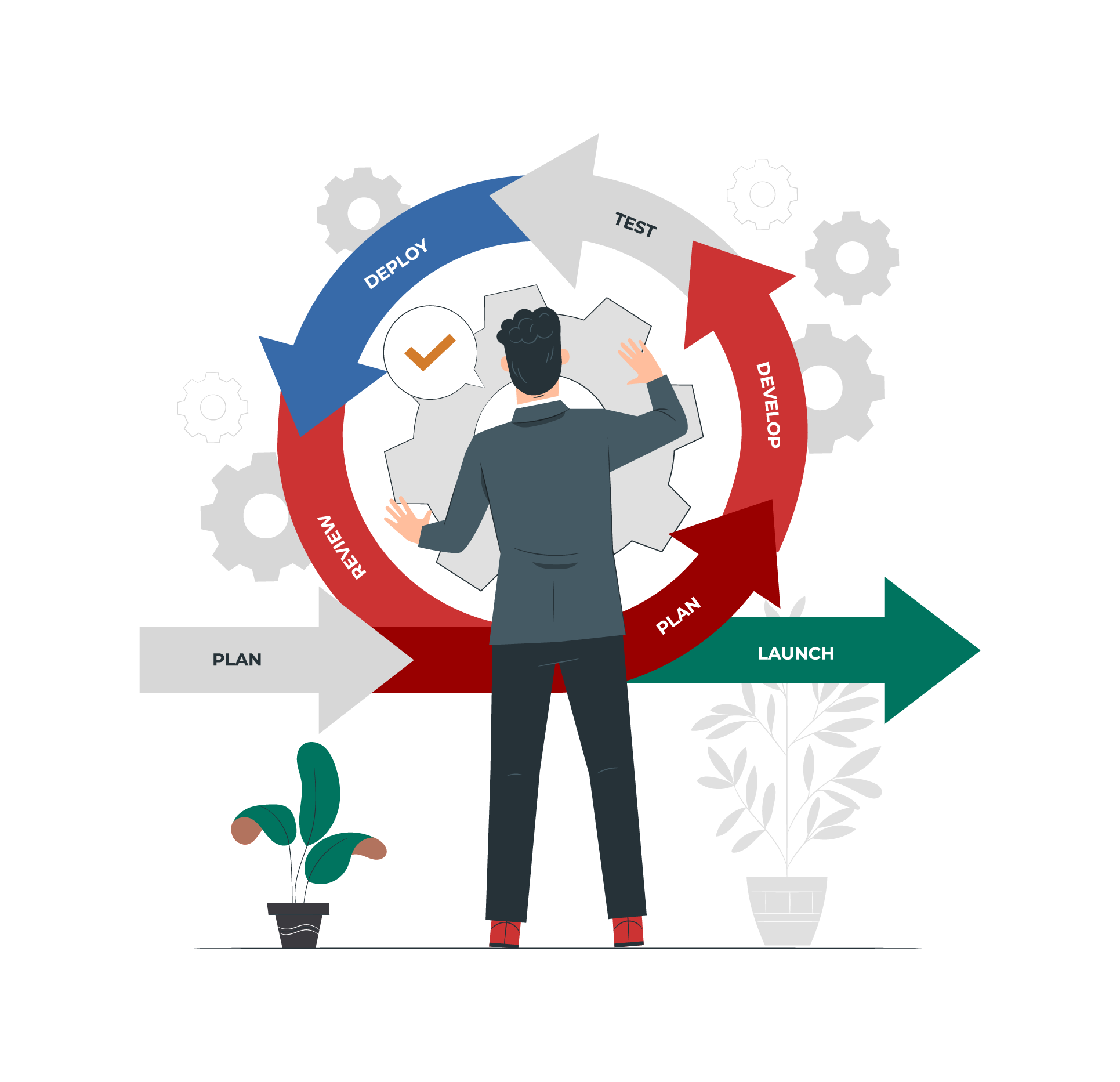INTEGRATE YOUR DATA: FROM LIFECYCLE TO VALUE SHARING

What is Data Integration ?
The concept of middleware is evolving towards the notion of an exchange platform.
It’s no longer just about circulating data but about sharing it across various use cases within each business unit.
Facilitated communication within a global integration ecosystem.
Increased operational agility and reduced development costs.
An essential flexibility to adapt to technological advancements.
The complexity of data life cycles has given rise to the concept of a pipeline. This concept is not limited to a succession of steps but involves aggregating various sources followed by data preparation. These data must then be made available to business users for analysis and services, promoting new ways of working inspired by the Data Mesh approach.
In this context, more and more companies are opting to streamline their data exchanges by choosing a single exchange platform solution with two goals:
- Pooling skills and resources.
- Building exchanges on pivot formats and offering data consumption services to internal and external users (exposure, publication, etc.).
The complexity of data life cycles has given rise to the concept of a pipeline. This concept is not limited to a succession of steps but involves aggregating various sources followed by data preparation. These data must then be made available to business users for analysis and services, promoting new ways of working inspired by the Data Mesh approach.
In this context, more and more companies are opting to streamline their data exchanges by choosing a single exchange platform solution with two goals:
- Pooling skills and resources.
- Building exchanges on pivot formats and offering data consumption services to internal and external users (exposure, publication, etc.).
HOW TO INTEGRATE YOUR DATA FLOWS USING AN EXCHANGE PLATFORM?
The desire to consider data as essential products of the company requires mastering the processes that ensure the proper emission, sharing, and reception of data.
The growing number of applications requires technological flexibility to build easy-to-implement and scalable interfaces. Here are some changes in the way data is exchanged and shared, depending on the company’s context:
- 1. Real-time is becoming increasingly important due to business requirements and technological advancements:
- Having information as soon as it is updated is becoming a requirement for various business use cases: engaging customers, publishing up-to-date data, monetizing data, exploiting flexibility and agility by detecting changes as early as possible.
- Real-time techniques are now well mastered, particularly those based on exposing data via APIs and messaging. So why not systematically favor real-time (synchronous or asynchronous) processes for greater efficiency?
HOW TO INTEGRATE YOUR DATA FLOWS USING AN EXCHANGE PLATFORM?
The desire to consider data as essential products of the company requires mastering the processes that ensure the proper emission, sharing, and reception of data.
The growing number of applications requires technological flexibility to build easy-to-implement and scalable interfaces. Here are some changes in the way data is exchanged and shared, depending on the company’s context:
- 1. Real-time is becoming increasingly important due to business requirements and technological advancements:
- Having information as soon as it is updated is becoming a requirement for various business use cases: engaging customers, publishing up-to-date data, monetizing data, exploiting flexibility and agility by detecting changes as early as possible.
- Real-time techniques are now well mastered, particularly those based on exposing data via APIs and messaging. So why not systematically favor real-time (synchronous or asynchronous) processes for greater efficiency?
- 2. The impact of new architectures:
- Cloud and iPaaS: With applications now spread between on-premise, in the Cloud, and fully externalized in SaaS mode, managing the flows between these different instances requires new functions available in iPaaS (Integration Platform as a Service). These platforms enable the deployment of hybrid architectures, offering a controlled execution base for exchanges. This foundation combines local execution engines (agents) spread across each storage location with centralized control of these agents, usually in SaaS mode.
- The return of ELT and bulk ingestion: The implementation of data platforms to manage data pipelines first involves ingesting data in its raw format. Solutions exist to meet this challenge, particularly when data volumes and performance requirements are high.
- 3. Middleware and data quality: Transfer data or also transform it?
- Choices diverge when deciding where to add intelligence: in the middleware, in business applications, or in a data platform. This choice depends on the company’s strategies, the capabilities of the applications involved, and the internal organization around these issues.
- 4. Service bus: leading to a data hub?
- The notion of a service bus streamlines communication and data exchange between sources and consumers (which can often be the same) through exchange patterns, either point-to-point or publish-subscribe. Additional rules can be added, such as management policies or API calls to enrich the data. In this way, the service bus for data approaches the concept of a hub.
- 2. The impact of new architectures:
- Cloud and iPaaS: With applications now spread between on-premise, in the Cloud, and fully externalized in SaaS mode, managing the flows between these different instances requires new functions available in iPaaS (Integration Platform as a Service). These platforms enable the deployment of hybrid architectures, offering a controlled execution base for exchanges. This foundation combines local execution engines (agents) spread across each storage location with centralized control of these agents, usually in SaaS mode.
- The return of ELT and bulk ingestion: The implementation of data platforms to manage data pipelines first involves ingesting data in its raw format. Solutions exist to meet this challenge, particularly when data volumes and performance requirements are high.
- 3. Middleware and data quality: Transfer data or also transform it?
- Choices diverge when deciding where to add intelligence: in the middleware, in business applications, or in a data platform. This choice depends on the company’s strategies, the capabilities of the applications involved, and the internal organization around these issues.
- 4. Service bus: leading to a data hub?
- The notion of a service bus streamlines communication and data exchange between sources and consumers (which can often be the same) through exchange patterns, either point-to-point or publish-subscribe. Additional rules can be added, such as management policies or API calls to enrich the data. In this way, the service bus for data approaches the concept of a hub.
- 5. The two main real-time technologies—synchronous (API) and asynchronous (streaming/messaging)—are ultimately more complementary than competitive:
- Web API allows data to be exposed for consuming applications, whether for internal needs or for external-facing services. Its main limitation lies in the requirement for high availability, particularly when managing flows. Additionally, this type of API is often subject to more restrictive security policies in terms of use and authorization to guarantee data access confidentiality and maintain API service levels.
- Streaming, with its near-zero latency, meets most real-time requirements. It is therefore a solution to be favored, particularly for use in data pipelines. Solutions like Kafka allow for large-scale data processing in messaging mode, though it is no longer the only player in the field today.
- Acknowledgment management is a crucial requirement to ensure all information is transmitted correctly, and its implementation is facilitated within a bus that can combine Web APIs and streaming.
- 5. The two main real-time technologies—synchronous (API) and asynchronous (streaming/messaging)—are ultimately more complementary than competitive:
- Web API allows data to be exposed for consuming applications, whether for internal needs or for external-facing services. Its main limitation lies in the requirement for high availability, particularly when managing flows. Additionally, this type of API is often subject to more restrictive security policies in terms of use and authorization to guarantee data access confidentiality and maintain API service levels.
- Streaming, with its near-zero latency, meets most real-time requirements. It is therefore a solution to be favored, particularly for use in data pipelines. Solutions like Kafka allow for large-scale data processing in messaging mode, though it is no longer the only player in the field today.
- Acknowledgment management is a crucial requirement to ensure all information is transmitted correctly, and its implementation is facilitated within a bus that can combine Web APIs and streaming.



